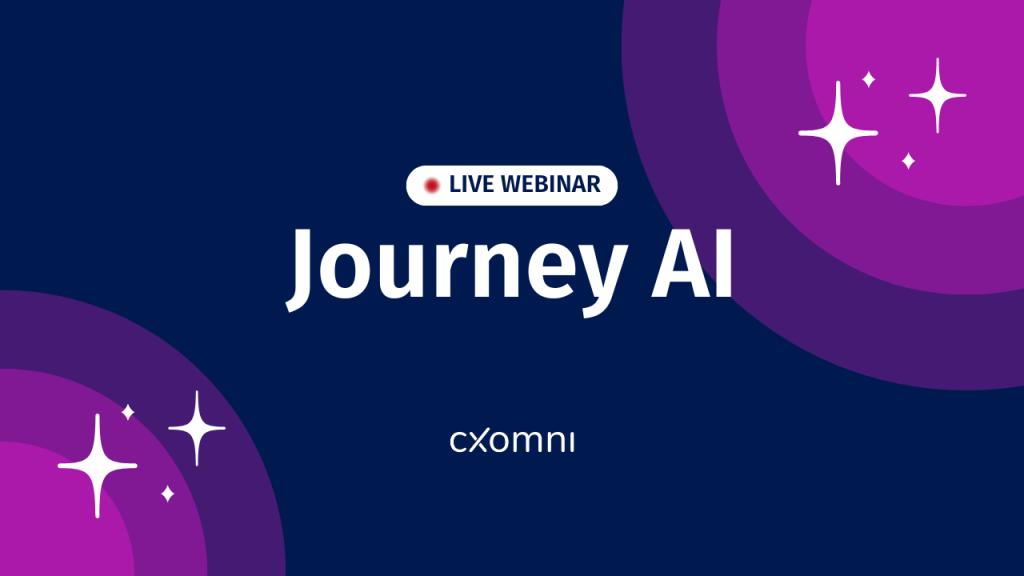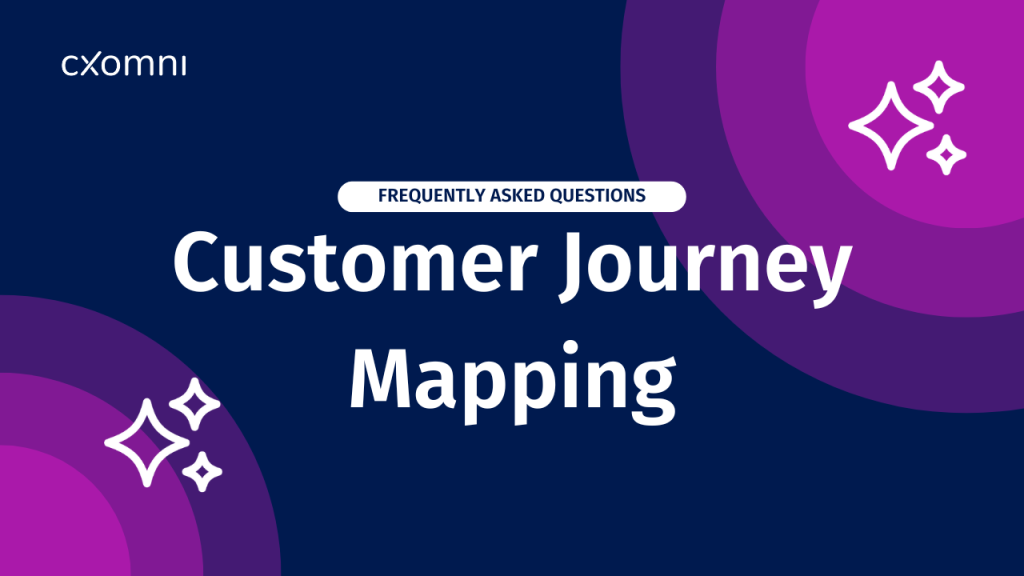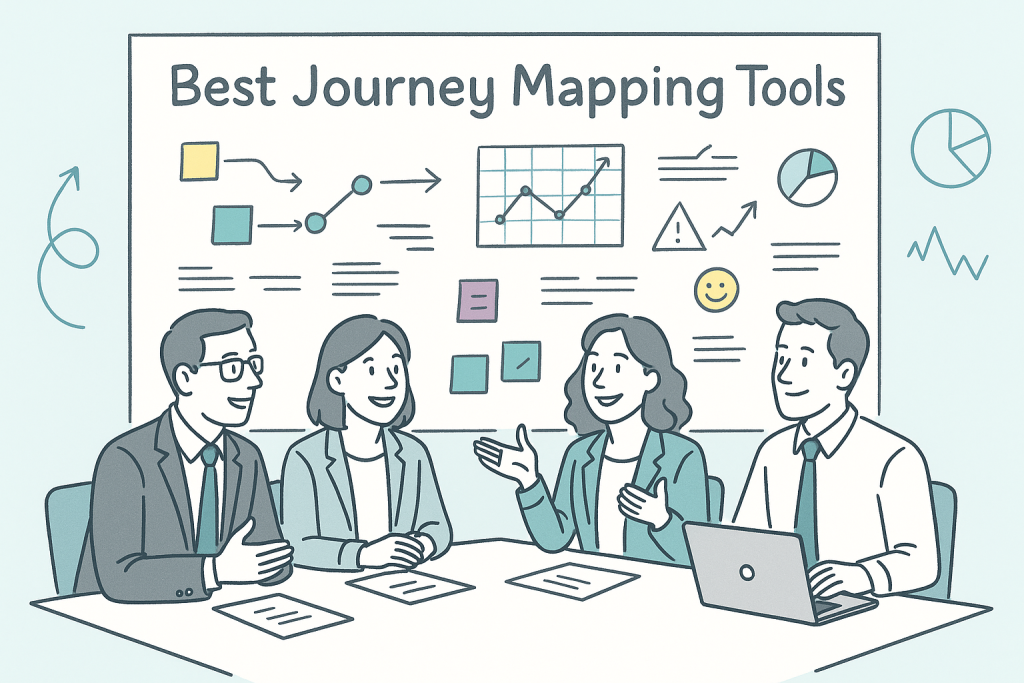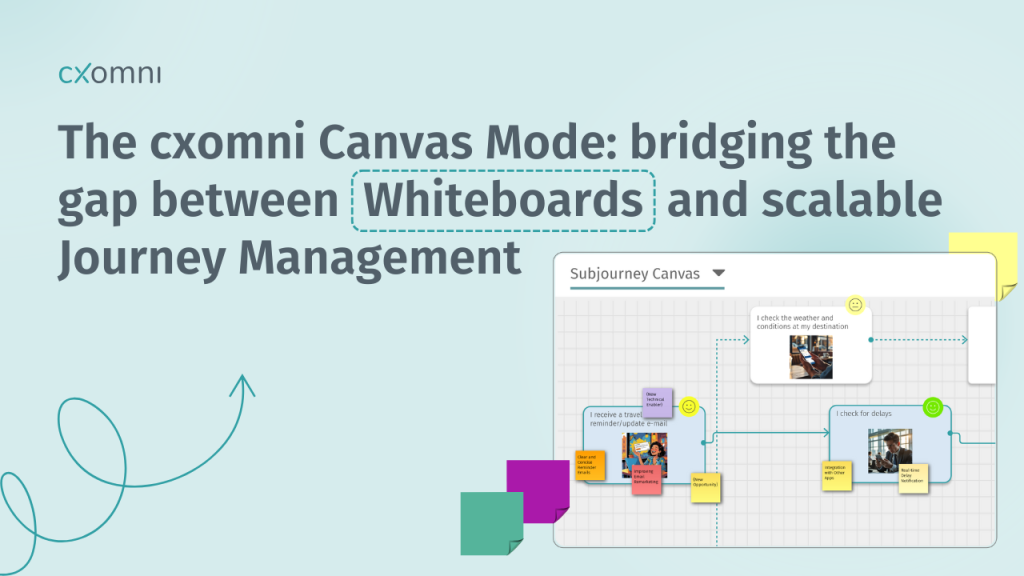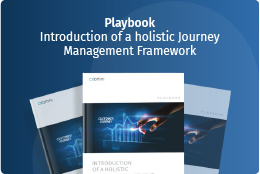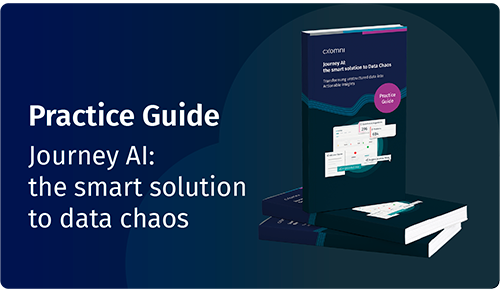By Robert Horndasch, CEO, cxomni
As someone who has spent navigating the complexities of customer experience and digital transformation for several years, I’ve learned a fundamental truth: context is everything. When businesses invest heavily in Voice of the Customer (VoC) programs, they hope to gain lots of valuable insights. But we see in many cases that these efforts fall short. Metrics are collected, feedback is documented, but the connection to meaningful action is missing. Why is this the case? Because too often, we focus on the data itself rather than the environment in which that data is generated – as I mentioned before: context is the key!
This is where companies should start thinking about Journey Management. By contextualizing VoC data within the customer journey, businesses can unlock insights that can improve customer experiences. Let’s explore how journey management transforms the way we analyze, act on, and benefit from customer insights.
Elevating customer insights to drive real impact
Because customer journeys are more complex than ever. Multiple channels, diverse product offerings, and global footprints mean that no two customer experiences are alike. However, traditional VoC programs often treat customers as a homogenous group. Surveys and feedback mechanisms aim to capture sentiment but don’t take into account why a customer feels a certain way at a specific touchpoint.
One of the main reasons for this disconnect is the inside-out perspective many organizations rely on: businesses focus on their processes, rather than adopting an outside-in view that puts the customer in the center. As the saying goes, “you can’t see the forest for the trees”—and that’s often where organizations lose sight of what truly matters. For example:
- A Net Promoter Score (NPS) survey might highlight dissatisfaction, but it cannot tell you if the frustration comes from an inefficient checkout process, an unhelpful support interaction, or something entirely unrelated.
- Open customer feedback can be full of relevant insights, but without the context of the customer’s journey, the data becomes anecdotal rather than systematic.
Let’s consider a real-world example to figure this out: An insurance provider wanted to understand why policyholders were frequently abandoning their online claims process. VoC feedback highlighted frustration, but the specifics remained unclear. Through journey mapping, they discovered that a mandatory document upload step was incompatible with many mobile devices, where most users were accessing the platform. By updating their claims portal with mobile-friendly features for document uploads and offering alternatives for users without access to specific document formats, the company streamlined the process and saw a major increase in claims completion rates and improved customer trust.
This means that Journey Management provides the structure to situate VoC insights within the specific interactions, touchpoints, and “moments that matter” along the customer’s journey, enabling businesses to pinpoint actionable changes with precision.
Customer Journey Mapping: the foundation for sustainable Journey Management
While journey mapping is an essential first step to visualize customer interactions, the sustainable benefit for a company’s success comes from managing and optimizing these journeys. This involves:
- Combining journeys with data: Integrating real-time data to monitor performance metrics like conversion rates, satisfaction scores, and operational efficiency at key touchpoints.
- Actionable feedback integration: Embedding VoC data into the journey framework to identify patterns and prioritize improvements.
- Cross-functional collaboration: Breaking down silos to ensure that marketing, sales, support, and operations teams have the same understanding of the customer journey.
This shift—from “fire-and-forget” surveys to ongoing journey management—enables businesses to adapt to their customer’s needs and behaviors rather than lagging behind them. After all, trying to keep up with modern customer demands without journey management is like “bringing a knife to a gunfight.”
Seeing clear: valuable customer insights for management teams
From my perspective as a CEO, the appeal of journey management lies in its ability to address the “so what” factor of customer feedback. Decision-makers need clarity and confidence in where to allocate resources. Journey management delivers this in several ways:
- Enhanced transparency: By visualizing the customer journey with integrated data, leaders gain a clearer understanding of pain points and opportunities.
- Prioritized investments: Instead of chasing generic customer satisfaction improvements, journey management identifies the specific touchpoints where investments have the highest impact.
- Measurable impact: By defining KPIs tied to journey stages, organizations can track the outcomes of their CX initiatives.
Consider another example: A telecom provider struggled with high customer churn. While they knew dissatisfaction with billing processes was a contributing factor, their VoC surveys couldn’t pinpoint the exact problem. Through journey management, the management team identified a confusing billing communication process that left customers feeling frustrated. By redesigning these communications and offering proactive support, the company reduced churn rates within six months.
The right tech-stack makes the difference
Transitioning from static mapping to dynamic management requires the right tools. At cxomni, we’ve built a SaaS platform designed to bridge the gap between insights and action. Our approach emphasizes:
- Standardization: Creating consistent methodologies for journey mapping and management which can be compared to approaches such as Product Lifecycle Management (PLM).
- Real-time data integration: Incorporating feedback, performance metrics, and transactional data to keep journey maps relevant and actionable.
- Collaboration: Facilitating teamwork across departments to ensure alignment and accountability.
By implementing journey management software, businesses can move away from manual processes and adopt scalable, repeatable practices that drive continuous improvement.
Additional benefits and strategic recommendations
At first glance, the implementation of a journey management system appears to involve a great deal of effort. However, if you take a closer look, the advantages for the company’s success outweigh the disadvantages. Because Journey management offers a range of strategic benefits beyond the operational improvements. Here are some advantages and recommendations:
- Proactive customer retention: By identifying pain points before they escalate, journey management enables businesses to intervene early, preventing customer churns.
- Enhanced personalization: Understanding the journey at a granular level helps companies to offer tailored experiences that resonate with individual customer needs and preferences.
- Improved employee engagement: When teams work with journey insights, they can align their efforts more effectively, leading to greater collaboration.
- Future-proofing CX strategies: Journey management enables organizations to adapt to evolving customer expectations and market conditions.
To fully realize these benefits, I recommend the following steps:
- Invest in training: Ensure that all relevant teams understand the principles of journey management and how to apply them.
- Adopt a continuous improvement mindset: Treat journey management as an ongoing process, not a one-time project.
- Leverage advanced analytics: Use predictive analytics to anticipate customer needs and refine journey stages proactively.
Why sentiment analysis and AI are Game-Changers for VoC
Finally, let’s look at the technological trends that will shape customer journey management in the coming years. Integrating smart technologies like sentiment analysis and artificial intelligence (AI) into VoC programs can revolutionize how businesses interpret customer feedback. Traditional feedback collection often results in overwhelming volumes of unstructured data, making it challenging to extract actionable insights. AI-driven tools offer a different approach:
- Automating data analysis: Machine learning algorithms can quickly process large datasets, identifying trends that might go unnoticed by human analysts.
- Understanding sentiment nuances: Sentiment analysis goes beyond positive, neutral, and negative classifications. It captures emotions like frustration, enthusiasm, or confusion, providing deeper insights into customer motivation.
- Predicting customer behavior: By analyzing patterns in feedback, AI can predict future customer actions, such as churn or repeat purchases, enabling proactive interventions.
The advantages of using AI and sentiment analysis include scalability, speed, and the ability to uncover hidden insights that drive more informed decision-making. In short, it’s like “giving your CX strategy a turbo boost“ turning good intentions into great results. By combining these technologies with journey management, businesses can not only understand what their customers are saying but also why and how to respond effectively.
The future of Journey Management
As we look ahead, the evolution of journey management will likely mirror trends we’ve seen in other disciplines. Just as process managers have adopted standardized notations and frameworks (e.g., BPMN 2.0), journey management will benefit from increased formalization and integration into enterprise systems. But this is not just a technological challenge, it’s a cultural one. Organizations must embrace an outside-in mindset, valuing the customer’s perspective as a strategic asset rather than a secondary concern.
At cxomni, we’re passionate about helping businesses make this transition. Whether you’re just starting to map your journeys or looking to optimize an existing strategy, we’re here to support you every step of the way. Let’s move beyond metrics and create experiences that truly matter.


